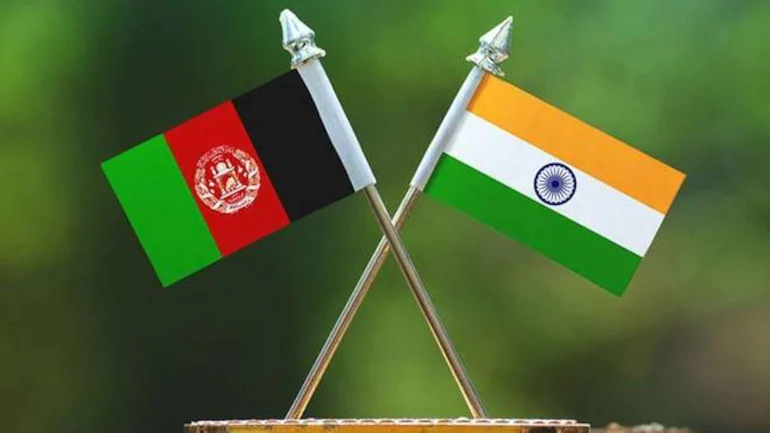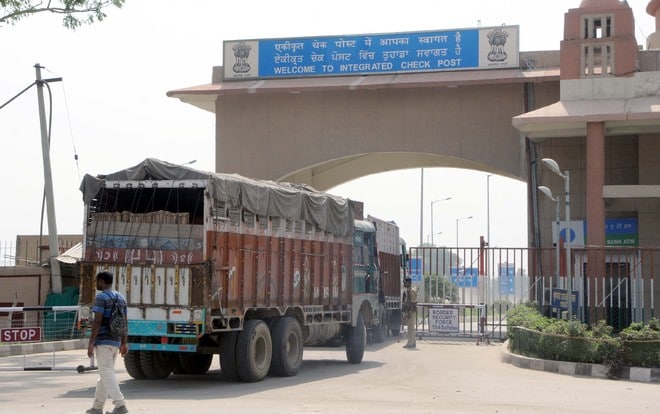The Fall of Kabul has marked a critical point in Afghanistan’s history that will be remembered in the days to come. The national capital fell into the hands of the Taliban on 15th August 2021, hours after President Ashraf Ghani chose to flee the country.
Entering the presidential palace, the group declared an end to the 20-year war. While the situation of Afghanistan is uncertain and the future too is difficult to predict, what does it have to say about the trade relations with India is a hot topic today.
The director-general of the Federation of Indian Export Organisation (FIEO) said, “Taliban have sealed the land-border trade route and stopped movement of cargo on the transit route with Pakistan”.
The two sealed terminals were of great trade importance. The trade with Dubai, so far, hasn’t seen any major impact. He added that a confronting statement by the Taliban has hinted that businesses will not be affected as such.

Industry officials firmly believe that this is a temporary stall and business can be expected to resume smoothly soon.
It is said that the transfer of power to the Taliban and adjustment with the new rule are causing delays and halts. Sources say that the shipments had already started to disrupt earlier this month.
New Delhi is South Asia’s largest market for Afghanistan. In 2020-21 the bilateral trade had a value of $1.4 billion. In 2011, after signing a deal, Afghanistan got access to duty-free trade with India. Exports are estimated at $826 million and imports around $510 million.
The plummet in imports will spike up the rates of commodities that were exported by Afghanistan to India. Mainly dry fruits since their share were 85%, Afghanistan supplied raisins, almonds, walnuts, figs, pistachios, pine nuts, and fruits like watermelon, cherry, apricots, and some medicinal herbs.
A Mumbai-based importer Rajinder Shah said that not even one truck has come from Wagah Border, huge losses have been incurred in lakhs since 200 trucks were supposed to arrive.
He also said that trucks for perishable items like pomegranates come in numbers of 20,000-30,000. These too have been halted.
The aftermath of this episode is such that the dry fruit market is experiencing price fluctuations. Since the festival season is nearing, it is doubtful that the current stocks will be sufficient.

Rs. 200 and Rs. 250 per kg surge is reportedly seen in almonds and pistachios respectively according to some traders.
According to BC Bhartia, India exports coffee, pepper, cotton, toys, footwear, tea, etc. The CIAT figured out that many payments have been blocked.
All India Sugar Trade Association claimed Afghanistan as the second-biggest buyer of sugar( 624,000 tonnes ). The Assam tea industry is worried about the changing economic situation as tea is regarded as Afghanistan’s “unofficial national beverage”.
On the other hand, India had made huge investments in strengthening the infrastructure of Afghanistan. Since 2001 around Rs224 crores have been put in to help develop 400 projects. Dams, power supply, and highways have been the main objectives of these projects. With the Taliban takeover, the future of these investments seems dicey.
The Taliban promised that it would take necessary measures to ensure the economic growth of the country but it is largely dependent on foreign aid.
Joe Biden’s administration declines access to cash and gold stocks and Western Union announced cutting off wire transfers. Canada and Germany do not have any plans to maintain connections with the Taliban or provide any financial aid.
The population is worse hit by the circumstances of the takeover as more than 47% of the country’s population is below the poverty line with the unemployment rate being 11.7 before the Taliban control.
Already, hunger and food shortage-related crises are common there. The Afghani( the currency) has notably fallen 4.6% following the transition in power. It currently stands at 86.0625 per dollar.
Even if the trade starts again, the economy of Afghanistan will remain at a cliffhanger position and it is difficult to interpret what the Taliban has in mind.
It is true the Taliban has many other sources of funds, criminal and illegal activities being the largest contributors (Example: Drugs).
The New York Times in 2010 was told by a top US General that Afghanistan’s mineral potential is ‘stunning’. Unfortunately, it is unlikely that the Taliban will make use of these for the welfare of the citizens instead of exploitation.
Also Read: Minutes of MPC meeting released, Jayanth Varma voice dissent












